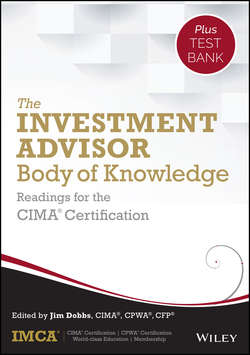Читать книгу The Investment Advisor Body of Knowledge + Test Bank - IMCA - Страница 19
CHAPTER 2
Regulatory Considerations
Indirect Relationships
ОглавлениеIn some cases, the consultant may be held out as a fiduciary without realizing that he or she is being held to a fiduciary standard. Sitting on the board of directors, as described above, may be one of those cases. Another situation is in the case of discretionary accounts. If a consultant manages a discretionary account on behalf of a client, he or she may be considered a fiduciary. In most cases, if there is a question of the nature of the relationship, the consultant may be held to the high standards of fiduciary care.
Under current legislation, prohibited transactions for ERISA plans are specific. According to IRS Publication 560 and www.irs.gov, ERISA prohibited transactions including the following six:
1. A transfer of plan income or assets to, or use of them by or for the benefit of, a disqualified person
2. Any act of a fiduciary by which plan income or assets are used for his or her own interest
3. The receipt of consideration by a fiduciary for his or her own account from any party dealing with the plan in a transaction that involves plan income or assets
4. The sale, exchange, or lease of property between a plan and a disqualified person
5. Lending money or extending credit between a plan and a disqualified person
6. Furnishing goods, services, or facilities between a plan and a disqualified person
According to Publication 560, disqualified individuals include the following 10 types:
1. A fiduciary of the plan
2. A person providing services to the plan
3. An employer, any of whose employees are covered by the plan
4. An employee organization, any of whose members are covered by the plan
5. Any direct or indirect owner of 50 percent or more of any of the following:
a. The combined voting power of all classes of stock entitled to vote, or the total value of shares of all classes of stock of a corporation
b. that is an employer or employee organization described in (3) or (4)
c. the capital interest or profits interest of a partnership that is an employer or employee organization described in (3) or (4)
d. the beneficial interest of a trust or unincorporated enterprise that is an employer or an employee organization described in (3) or (4)
6. A member of the family of any individual described in (1), (2), (3), or (4) (i.e., the individual's spouse, ancestor, lineal descendant, or any spouse of a lineal descendant)
7. A corporation, partnership, trust, or estate of which (or in which) any direct or indirect owner described in (1) through (5) holds 50 percent or more of any of the following:
a. The combined voting power of all classes of stock entitled to vote or the total value of shares of all classes of stock of a corporation
b. The capital interest or profits interest of a partnership
c. The beneficial interest of a trust or estate
8. An officer, director (or an individual having powers or responsibilities similar to those of officers or directors), a 10 percent or more shareholder, or highly compensated employee (earning 10 percent or more of the yearly wages of an employer) of a person described in (3), (4), (5), or (7)
9. A 10-percent or more (in capital or profits) partner or joint venture of a person described in (3), (4), (5), or (7)
10. Any disqualified person, as described in (1) through (9) above, who is a disqualified person with respect to any plan to which a multiemployer plan trust is permitted to make payments under section 4223 of ERISA
Consultants should pay particular attention to items (1) and (2). In general, as a disqualified individual, the consultant should not benefit from the relationship as the guidelines describe above.
